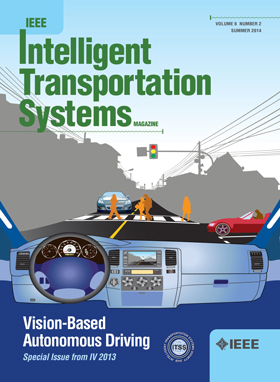Predictive Modeling for Driver Insurance Premium Calculation Using Advanced Driver Assistance Systems and Contextual Information
IF 7.9
1区 工程技术
Q1 ENGINEERING, CIVIL
IEEE Transactions on Intelligent Transportation Systems
Pub Date : 2025-01-08
DOI:10.1109/TITS.2024.3518572
引用次数: 0
Abstract
Telematics devices have transformed driver risk assessment, allowing insurers to tailor premiums based on detailed evaluations of driving habits. However, integrating Advanced Driver Assistance Systems (ADAS) and contextualized geolocation data for predictive improvements remains underexplored due to the recent emergence of these technologies. This article introduces a novel risk assessment methodology that periodically computes weekly insurance premiums by incorporating ADAS risk indicators and contextualized geolocation data. Using a naturalistic dataset from a fleet of 354 commercial drivers over a year, we modeled the relationship between past claims and driving data, and use that to compute weekly premiums that penalize risky driving situations. Risk predictions are modeled through claims frequency using Poisson regression and claims occurrence probability using machine learning models, including XGBoost and TabNet, and interpreted with SHAP. The dataset is divided into weekly profiles containing aggregated driving behavior, ADAS events, and contextual attributes. Results indicate that both modeling approaches show consistent attribute impacts on driver risk. For claims occurrence probability, XGBoost achieved the lowest Log Loss, reducing it from 0.59 to 0.51 with the inclusion of all attributes; for claims frequency, no statistically significant differences were observed when including all attributes. However, adding ADAS and contextual attributes allows for a comprehensive and disaggregated interpretation of the resulting weekly premium. This dynamic pricing can be incorporated into the insurance lifecycle, enabling bespoke risk assessment based on emerging technologies, the driving context, and driver behavior.求助全文
约1分钟内获得全文
求助全文
来源期刊

IEEE Transactions on Intelligent Transportation Systems
工程技术-工程:电子与电气
CiteScore
14.80
自引率
12.90%
发文量
1872
审稿时长
7.5 months
期刊介绍:
The theoretical, experimental and operational aspects of electrical and electronics engineering and information technologies as applied to Intelligent Transportation Systems (ITS). Intelligent Transportation Systems are defined as those systems utilizing synergistic technologies and systems engineering concepts to develop and improve transportation systems of all kinds. The scope of this interdisciplinary activity includes the promotion, consolidation and coordination of ITS technical activities among IEEE entities, and providing a focus for cooperative activities, both internally and externally.
 求助内容:
求助内容: 应助结果提醒方式:
应助结果提醒方式:


